Intel Core i9-14900K, Core i7-14700K and Core i5-14600K Review: Raptor Lake Refreshed
by Gavin Bonshor on October 17, 2023 9:00 AM EST
In what is to be the last of Intel's processor families to use the well-established Core i9, i7, i5, and i3 naming scheme, Intel has released its 14th Generation Core series of desktop processors, aptly codenamed Raptor Lake Refresh (RPL-R). Building upon the already laid foundations of the 13th Gen Core series family, Intel has announced a variety of overclockable K and KF (no iGPU) SKUs, including the flagship Core i9-14900K, the reconfigured Core i7-14700K, and the cheaper, yet capable Core i5-14600K.
The new flagship model for Intel's client desktop products is the Core i9-14900K, which looks to build upon the Core i9-13900K, although it's more comparable to the special edition Core i9-13900KS. Not only are the Core i9-14900K and Core i9-13900KS similar in specifications, but the Core i9-14900K/KF are the second and third chips consecutively to hit 6.0 GHz core frequencies out of the box.
Perhaps the most interesting chip within Intel's new 14th Gen Core series family is the Core i7-14700K, which is the only chip to receive an uplift in cores over the previous SKU, the Core i7-13700K. Intel has added four more E-cores, giving the Core i7-13700K a total of 8 P-cores and 12 E-cores (28 threads), with up to a 5.6 GHz P-core turbo and a 125 W base TDP; the same TDP across all of Intel's K and KF series 14th Gen core chips.
Also being released and reviewed today is the Intel Core i5-14600K, which has a more modest 6P+8E/20T configuration and has the same configuration 5.3 GHz boost frequency and 3.5 GHz base frequency on the P-cores as the Core i5-13600K. Intel has only boosted the E-core boost frequency by 100 MHz to justify the Core i5-14600K, which means it should perform similarly to its predecessor.
Despite being a refreshed selection of Intel's 13th Gen Raptor Lake platform, the biggest question, aside from the performance, is what are the differences, and are there any nuances to speak of, and how do they correlate regarding performance to 13th Gen? We aim to answer these questions and more in our review of the Intel 14th Gen Core i9-14900K, Core i7-14700K and Core i5-14600K processors.
Intel Core 14th Gen: Raptor Lake Refreshed, Same Underlying Architecture
Being as frank and open as possible from the outset, Intel's 14th Gen Series – or Raptor Lake Refresh – is precisely what it says on the tin: a refreshed variant of the previous 13th Gen Core series, AKA Raptor Lake. Regarding the underlying architecture, all bar the Core i7 series have the exact core count, core configuration, and number of hardware threads as their now replaced counterparts. Under the IHS of the 14th Gen is an identical core architecture on both the P and E-cores, with Raptor Cove P-cores and Gracemont E-cores; Gracemont has been the E-core of choice for Intel's hybrid architecture, starting from the 12th Gen Core, AKA Alder Lake.
Given that Intel's 14th Gen Core family shares and uses the same underlying architecture as the previous generation, the Core 13th Gen Core family, we have a more detailed analysis of the Raptor Cove P-cores within our dedicated Core i9-13900K and Core i5-13600K review.
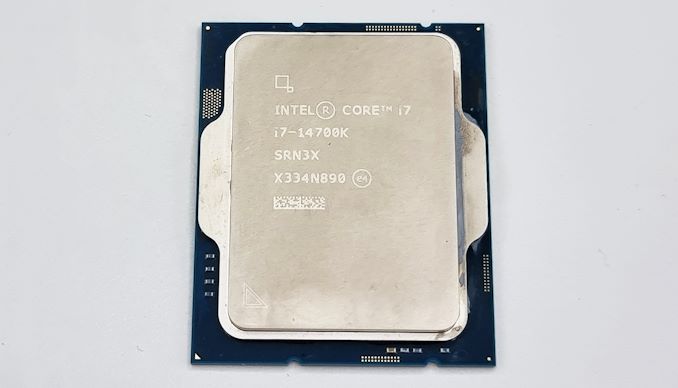
Intel Core i7-14700K processor with 8P+12E cores
Despite refreshing the same Raptor Cove P-cores and Gracemont E-Cores as the 13th Gen chips, theoretically, we should see more performance through the increase in P-core turbo clock speeds on the refreshed 14th Gen chips, especially when comparing the Core i9-14900K to the Core i9-13900K. The 14900K has a blazing fast 6.0 GHz P-core maximum boost frequency, whereas the 13900K topped out at up to 5.8 GHz using Intel's Thermal Velocity Boost (TVB) technology. That would certainly be more impressive to boast about if Intel hadn't already given the market a glimpse of 6.0 GHz out of the box with the Core i9-13900KS.
The primary thing to highlight from our Core i9-13900KS review, which was the first Raptor Lake chip to hit 6.0 GHz, is that we hit thermal limits in many situations where the extra performance should have been more beneficial, which caused the clocks to dial back. It's all good having a 6.0 GHz maximum frequency, but if it can't be sustained for a meaningful period, it makes it a little moot. It should also be noted that harnessing all this extra performance and, ultimately, higher power draw does mean that users will need to factor in good quality cooling, with Intel specifying that their testing was done on a 360 mm AIO closed loop cooler. The deciding factor in performance is keeping the Raptor Cove (P) cores as cool as possible, which isn't an easy task.

The Intel Core i9-14900K in CPU-Z
On the surface, this is the third generation of Intel's Core family to use Gracemont-based E-cores, and the adage 'if it's not broken, don't fix it' shouldn't apply to full generational refreshes. In the grand scheme of things, many users should expect Intel to at least make sweeping improvements to performance in any way it can. Although Intel does offer faster clock speeds across the board in both turbo and all-core, Intel is claiming gains in both compute and gaming performance. Interestingly, from having briefings with Intel and within their comparisons in slides from the deck, they weren't done directly against 13th Gen Core.
Regarding memory support, Intel's 14th Gen Core series processors support DDR5 and DDR4, much like their Alder Lake (12th Gen) and Raptor Lake (13th Gen) counterparts. This includes official support for JEDEC-standard memory speeds up to DDR5-5600B and DDR4-3200, respectively. As we have highlighted in multiple reviews, including the Alder Lake and Raptor Lake reviews, motherboards can only support either/or DDR5 and DDR4, and not both within the same motherboard. Allowing users to opt for more affordable DDR4 memory makes things cheaper, but DDR5 does perform better. As DDR5 memory has matured over the last year (and prices dropped), there are more performance benefits to DDR5 than DDR4.
| Intel 14th Gen Core, Raptor Lake-R (K/KF Series) | ||||||||||
| AnandTech | Cores P+E/T |
P-Core Base |
P-Core Turbo |
E-Core Base |
E-Core Turbo |
L3 Cache (MB) |
iGPU | Base W |
Turbo W |
Retail Price ($) |
| i9-14900K | 8+16/32 | 3200 | 6000 | 2400 | 4400 | 36 | 770 | 125 | 253 | $599 |
| i9-14900KF | 8+16/32 | 3200 | 6000 | 2400 | 4400 | 36 | - | 125 | 253 | $574 |
| i9-13900K | 8+16/32 | 3000 | 5800 | 2200 | 4300 | 36 | 770 | 125 | 253 | $537 |
| i7-14700K | 8+12/28 | 3400 | 5600 | 2500 | 4300 | 30 | 770 | 125 | 253 | $419 |
| i7-14700KF | 8+12/28 | 3400 | 5600 | 2500 | 4300 | - | 253 | $394 | ||
| i7-13700K | 8+8/24 | 3400 | 5400 | 2500 | 4200 | 30 | 770 | 125 | 253 | $365 |
| i5-14600K | 6+8/20 | 3500 | 5300 | 2600 | 4000 | 24 | 770 | 125 | 181 | $329 |
| i5-14600KF | 6+8/20 | 3500 | 5300 | 2600 | 4000 | 24 | - | 125 | 181 | $304 |
| i5-13600K | 6+8/20 | 3500 | 5300 | 2600 | 3900 | 24 | 770 | 125 | 181 | $285 |
While it is fair to say on paper there are likely to be similar performance levels when comparing some chips; the Core i9-14900K should technically beat the Core i9-13900K in single-thread and multi-threaded burst scenarios. The critical takeaway and thing to note here is that Intel isn't expecting users to upgrade from the previous generation but instead is targeting users on even older generations, such as the 10th and 11th generation parts (Comet Lake and Rocket Lake). While users will benefit from upgrading to a Core i9-14900K from say, a Core i5-13600K in terms of compute performance, but about gaming, it's likely that unless a specific title is optimized beyond 8-16-cores, users would see more benefits from an upgrade in graphics.

The Intel Core i9-14900K and Core i5-14600K processors
Comparing the Core i9 series specifications, the Core i9-14900K (MSRP $589) and KF (MSRP $564) have a 6.0 GHz max turbo boost clock speed, which is a 200 MHz bump over the Core i9-13900K and is the same as the Core i9-13900KS special edition processor. Subtle improvements have been made to both P and E-core clock speeds, with a 200 MHz bump to both the P-core and E-core base frequencies over the Core i9-13900K, while the E-core boost frequency is up 100 MHz to 4.4 GHz.
Everything else remains the same, from the 36 MB of L3 Intel Smart Cache, the same underlying Raptor Cove P-cores and Gracemont-based E-cores, and even the TDPs (PL1 = 125 W and PL2 = 253 W) remain unchanged. Intel has added a new 'Extreme' Power Delivery Profile, implemented through the firmware on capable boards, and increases the ICCMax to 400 A, up from the default 307 A value. Even with PL1 and PL2 values defined at 253 W, motherboards, especially premium models with over-engineered power deliveries, will likely ignore these through implementations such as Multi-Core Enhancement (MCE) or other derivatives.
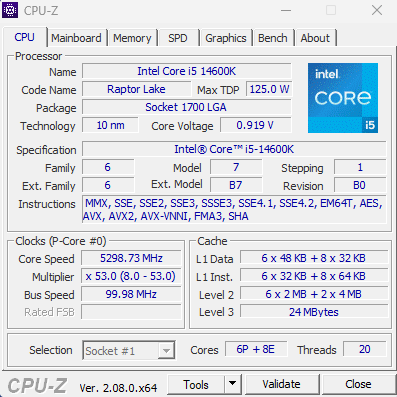
CPU-Z Screenshot of the Core i5-14600K processor
Moving onto the Core i5-14600K (MSRP $319), it has a 6P+8E/20T configuration. It represents a more affordable option, with ample power under the IHS to be a competent addition to a mid-range gaming system. With our review of the Intel Core i9-13900K and Core i5-13600K back at launch in October 2022, the Core i5-13600K did well and represented a good balance of cost to performance. We would expect the Core i5-14600K to be running along the same lines as the 13th Gen counterpart; at least, we wouldn't expect any levels of regression, which would make the upgrade path moot. The only difference between the Core i5-14600K and the previous Core i5-13600K is that the Core i5-14600K has a 100 MHz faster E-core boost frequency (up to 4 GHz), and that's it. Nothing else has been added or changed in relation to the specifications.
Intel Core i7-14700K: A Definitive Upgrade Over 13th Gen
Much of what has been said can also be attributed to the Core i7-14700K (MSRP $409), which, when compared directly to the Core i7-13700K, is the only area where Intel has made a meaningful hardware configuration change. Specifically, Intel has upped the E-core count to 12 cores, versus the 8 found in the Core i7-13700K, bringing the total to 8P+12E/28T. Not only an increase to the E-cores, but Intel has also opted for a 200 MHz bump to P-core turbo clock speeds, which gives the Core i7-14700K a P-core turbo of up to 5.6 GHz and a base P-core frequency of 3.5 GHz.
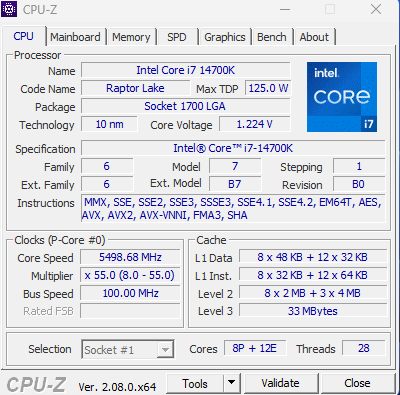
Intel Core i7-14700K processor in CPU-Z
If anything, the Intel 14th Gen series doesn't scream an upgrade for preexisting 12th or 13th Gen adopters. However, going from a Core i3 to a Core i9 would undoubtedly yield a significant gain in computational and even improvements in gaming performance, regardless of what frame rate the graphics card being used is capable of.
As Intel has given the Core i7-14700K four additional E-cores over its predecessor, the question could and should be asked, why not give other models in the family more of the same treatment? We have posed this question to Intel, but we've not (at the time of writing) had a response. Whether or not the new Core i7-14700K are recycled i9-14900K's with cut-down E-cores, which may have potentially failed the binning process, or if something else exists, we will update below once we've received a response from Intel.
Intel 14th Gen Core Series: Intel AI Assist Overclocking & Application Optimizer
So, aside from the subtle changes we've highlighted above, Intel does have a couple of new 'tricks' up their sleeve, so to speak, to add some further functionality and pizazz. The first one is what Intel calls AI Assist for overclocking, which is more or less exactly what the name says on the tin. This is an automatic, AI-assisted overclocking tool that attempts to ascertain what a reasonable overclock for the installed chip would be, and is accessed via their Extreme Tuning Utility (XTU).
Initially introduced to offer AI assist to the Core i9-14900K and K/F SKUs, Intel isn't explicitly saying it won't be coming to support other K series processors. However, they did go as far as saying it is a 14th-generation feature, which sort of gatekeeps users with 13th-generation processors. It's also worth noting that AI Assist isn't replacing Intel Speed Optimizer, and there are substantial differences between the two technologies.
A simple rundown of how Intel AI Assist works goes something like this:
-
AI Assist measures specific system characteristics, including telemetry from integrated sensors such as temperatures, and operates a set of tests to determine a baseline of performance and potential overclocking headroom.
-
The data collected from the tests is fed into an AI model trained at Intel's lab on many systems comprised of various combinations of processor, motherboard, memory, and cooling.
-
The AI model, through AI assist, which has been trained, responds with a list of 'estimated' overclocking settings, including CPU ratios that the system should be capable of doing.
-
The user is then given the option to apply the estimated values suggested by the AI model or manually fine-tune if the user wants to or disagrees with Intel AI Assist's settings.
Although this sounds simple in principle, we have to explicitly remind users that overclocking, even just through the memory, is technically a breach of the warranty and, as such, would mean the processor wouldn't be viable for replacement if an accident happened or the chip was to die. Although this is very unlikely, it should be noted that regardless of what Intel AI Assist suggests can be used as a rough guide to what the processor may or may not be capable of, the onus on whether or not the user applies these settings is on them, and as such, will likely bare the brunt of the consequences if something did happen to go wrong.
Whether that potential scenario is one that many are willing to swallow is subjective and down to individual opinion. Still, the idea of assisted AI using a trained AI model to determine overclocking headroom (albeit safely) is something I like. It's something different, but it's another implementation of AI in a way that might even squeeze out more performance.
Meanwhile, we also have Intel's new Application Optimizer, and this is where things get a little bit complicated. The way Intel describes the new feature leaves a little to be desired, but in short, it is designed to 'optimize' system settings to increase performance in games that have been whitelisted. At the time of writing, only two titles, Rainbow 6 Siege and Metro Exodus, can take advantage of this. The Intel Application Optimizer is preloaded via Intel's current Dynamic Tuning Technology (DTT).
My first thought is that this is akin to the whitelists we've seen with mobile device manufacturers. If a specific benchmark, test, or application runs, it changes the parameters based on the benchmark and offers more aggressive settings to score higher. On the surface, we believe additional performance is good, especially if the situation allows it. What we aren't so keen on is a whitelist that boosts performance with some applications but doesn't apply to others.
On the mobile side, SoC vendors have previously used whitelists as a means of cheating as performance in specific synthetic benchmarks didn't match real-world performance by violating a device's thermal/power constraints. But this analogy admittedly breaks down some for high-end desktop chips, as these are generally not TDP-constrained devices, especially in games, which rarely light up more than the P-cores. Put another way, if it was just TDP holding back performance, Intel has previously shown no problem just increasing PL2 (again) and calling it a day.
What that means, however, is that for today's launch we don't have a clue what knobs Intel is turning to optimize gaming performance with Intel Application Optimizer. We've reached out to Intel for a comprehensive understanding of what it's meant to achieve (other than higher performance) and how it works. We'll update this segment once we have received their response.
Intel LGA1700: 600/700 Series Support For 14th Gen: New Z790 Boards on the Market
Something more of a surprise from Intel, without sounding like a backhanded compliment, is that Intel's previous two high-performance motherboard chipsets, the Z690 and Z790 chipset, both support Intel's 14th Gen Core series. Intel always intended for 600-series chipsets to support 14th Gen upon launch. It has to be taken into consideration that architecturally, there's very little difference between 12th, 13th, and 14th Gen, with the flagship Core i9 and premium Core i7 series receiving notable upgrades, either going from Golden Cove to Raptor Cove for the P-cores or bumps to core count and frequency in the way the Core i7-14700K has received when compared to its predecessor.
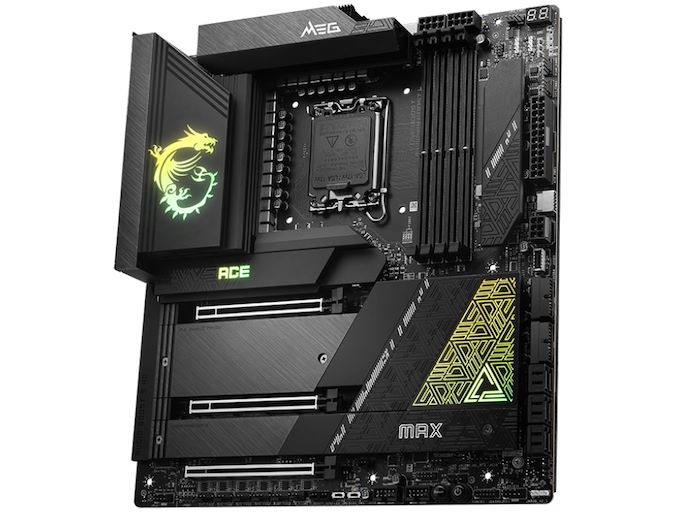
The MSI MEG Z790 Ace Max motherboard (We are using this board for Intel 14th Gen CPU testing)
It wouldn't be a processor launch if motherboard vendors didn't get to announce and release a wave of new boards, which are more recent designs based on the Z790 chipset. Some vendors, such as MSI, call it Z790 MAX, while GIGABYTE has opted for the Z790 X moniker to differentiate the new boards from the preexisting ones.
Although the chipset remains the same, many new boards have implemented Wi-Fi 7 support via discrete adapters. This means foregoing the Wi-Fi 6E MAC integrated into the chipset for CNVi, but the reality is that the world has moved on in only the span of a year, and Wi-Fi 6E is no longer the latest or greatest for Wi-Fi connectivity. So motherboard makers are instead back to using discrete adapters here.
Over the following few pages, we'll highlight updates to our CPU test suite for 2024 and the current rest bed for Intel's 14th Gen Core series. This also includes performance in various elements such as SPEC2017 1T and nT, encoding, rendering, scientific, and AI/inferencing workloads.
Read on for our extended analysis.


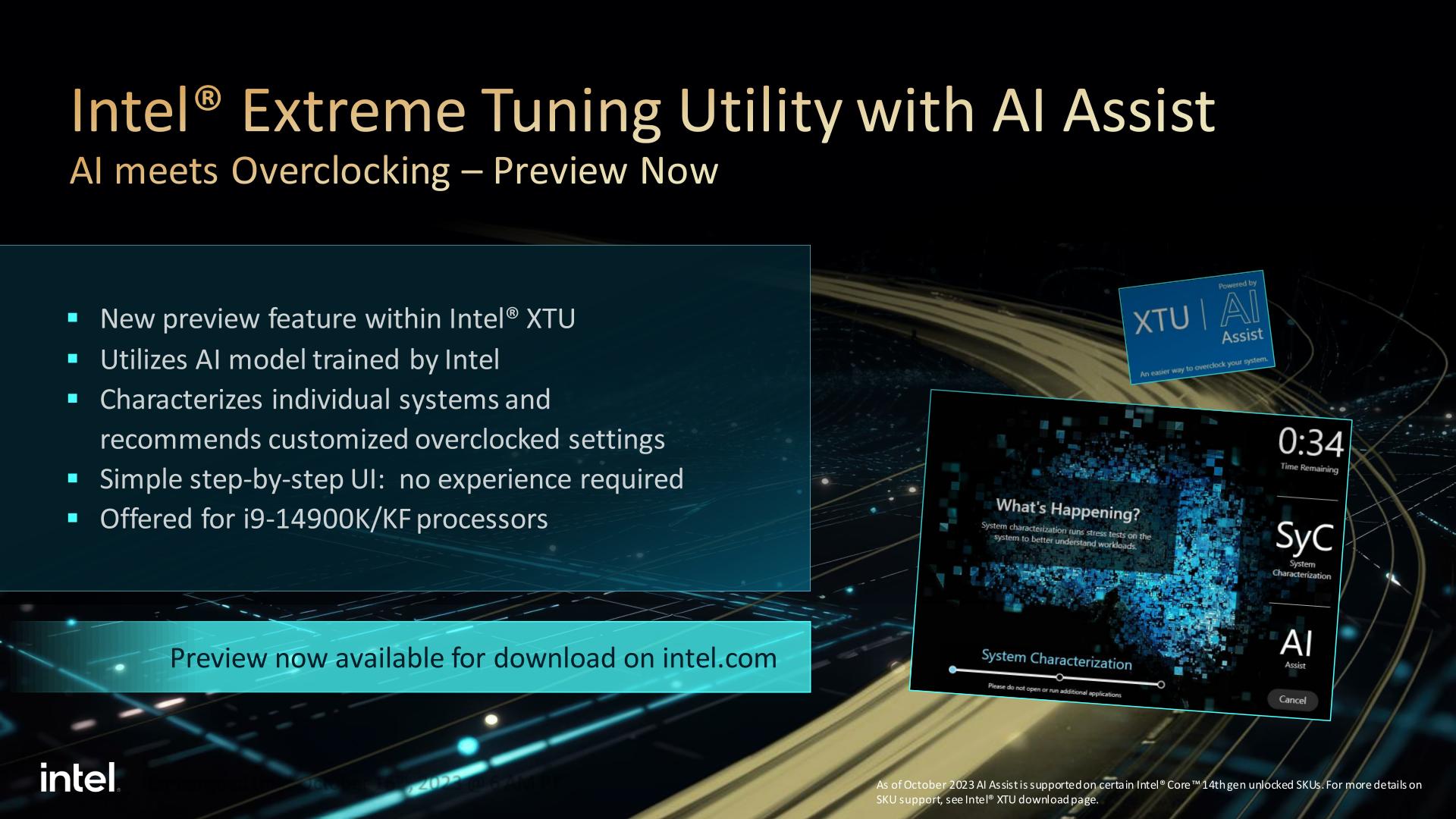
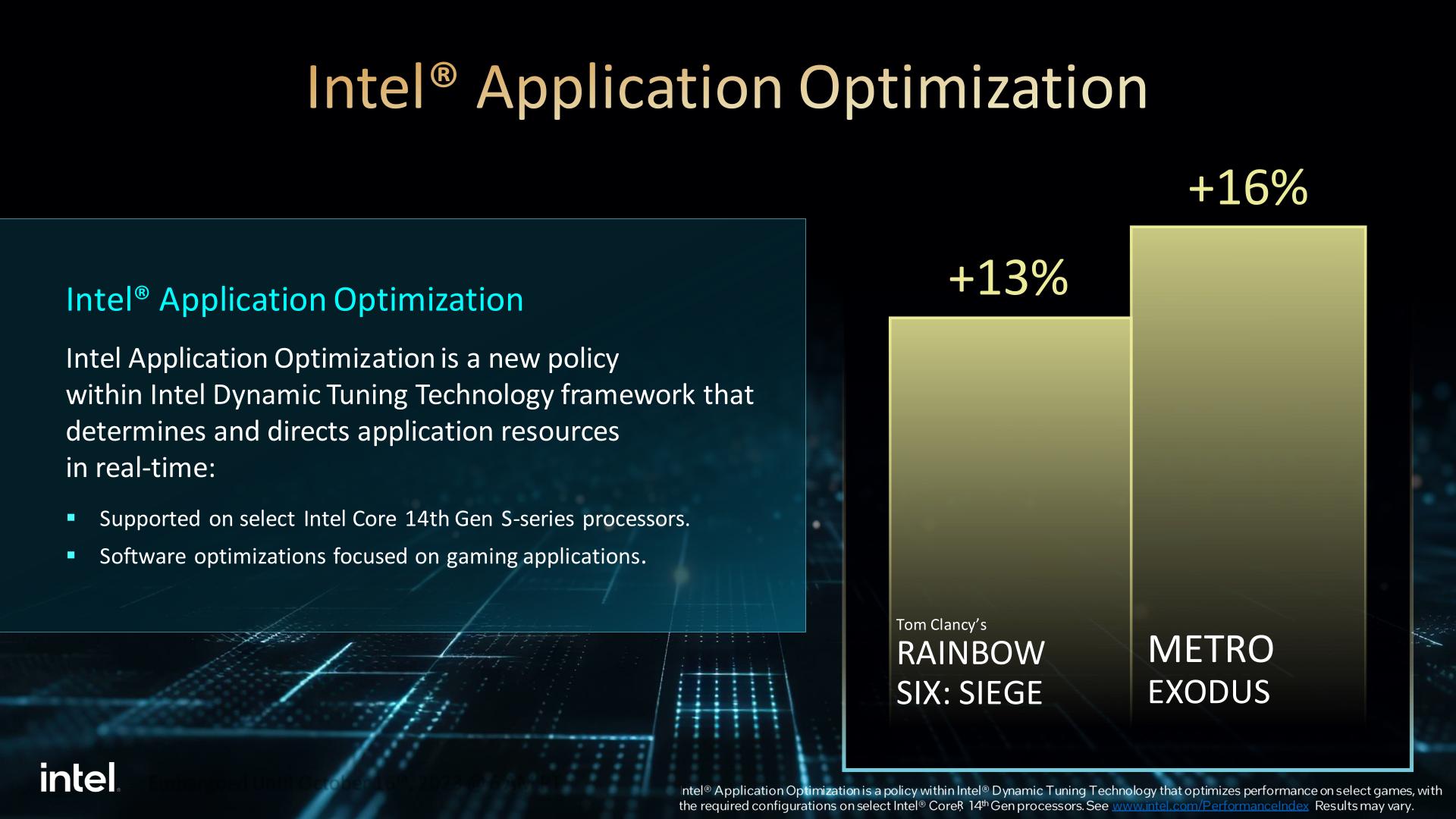









54 Comments
View All Comments
SanX - Wednesday, October 18, 2023 - link
Why Intel and AMD not make enthusiastic 100-200 core 6-7 GHz processors with TDP 1 kW for those who don't care how much they consume because already have 10-20 kW solar panel systems on their roof ? Let others be jealous. Green energy proponents will be dancing in joy. Replybananaforscale - Wednesday, October 18, 2023 - link
Shut up, troll. Replycmdrdredd - Wednesday, October 18, 2023 - link
No, there IS a place for ALL the performance at ANY cost. Some people are like that really. Not everyone lives and dies based on power consumption like the comments have you believing. I don't care, I can pay the bill and it's really peanuts difference between a 14900k and a 7950x in terms of the difference it would make on the power bill. If I am looking for max performance for my usage that isn't even a consideration, only performance matters. By that measure the 14900k is better sometimes and sometimes not. So it would come down to very specific use cases. What I'm saying is, everyone here moans about power usage but ignores the fact that not everyone pinches pennies on the power bill or needs to worry about it and just wants the max performance. That's why 4090s exist and sell well. ReplyItsAdam - Wednesday, October 18, 2023 - link
I own a 4090, still wouldn't buy a 14900k, was gonna buy then they decided to refresh.I dislike the heat element. This much possible power draw is broken,how can you cool that and maintain peak speeds. It's pointless.
The only ones who could use these are people on propper custom loops or ln2 overclocking.
They are literally pointless CPUs and the new gen of intel CPUs was just a total waste of time, development and retail. Just think how much waste they've made for this new gen that's the same, just the packaging and everything what a waste.
Pointless. Like your post. Reply
SanX - Thursday, October 19, 2023 - link
I also dont buy this gen Intel processors, so what?Cheap solar energy and efficient heat pumps will slowly change mentality. Now power supply in PC 1kW, soon they will be 2 kW and rarely who will care. People don't care about power efficiency. 99.9% don't even know the price per kilowatt-hour. Kids playing games dont even want to hear about it. If you care then find the solutions how to use that possible 0.25-1 megawatt of solar power falling on your property. Power efficiency is just the salespeople buzzword ReplyThe Von Matrices - Wednesday, October 18, 2023 - link
They already do make super-high TDP processors. They're called EYPC and Xeon. ReplySanX - Thursday, October 19, 2023 - link
Server and supercomputer high core count chips heavily rely on power efficiency, hence they have clocks 2-3 GHz. For example the 64 core EPIC processor essentially equivalent to the future 24-32 core consumer processor at 6 GHZ at 3-5x cost. If someone worry too much about power consumption just buy couple used solar panels for 100 bucks and you will cut the cost by half or 100% with smart backup ReplyPeachNCream - Wednesday, October 18, 2023 - link
Those peak power numbers are disgustingly bad. I wouldn't want to pay the utility bill for that so I'm glad I paired a keyboard to my phone and make do with less than 8w peak total system power consumption. Oddly enough, I don't feel as though I'm missing anything without some obnoxious box filled with a CPU like one of these and some obesity-level graphics card. Replycmdrdredd - Wednesday, October 18, 2023 - link
You aren't even the target market for any of this so your comment is useless and pointless. You are not an enthusiast, gamer, or need the power for work. ReplyItsAdam - Wednesday, October 18, 2023 - link
I old a 4090 and I wouldn't want a CPU with the same power as it. I was waiting for Meteor Lake upgrading from my 5800X3D, but when I heard it was a refresh I was like oh no.Looks like I'm going to be a beta tester for AMDs 6000 series, and I'm quite frankly bored of AMD and it's crash test consumer development.
I know times are changing, I know, and I loved to tinker but it's getting too long in the tooth with AMD ATM with all the agesa "fixes" which is usually a big performance loss.
I really wanted INTEL to come out brawling,but all they're doing is digging their own grave.
They shouldn't have released ANOTHER refresh, especially one as bad as this. Reply